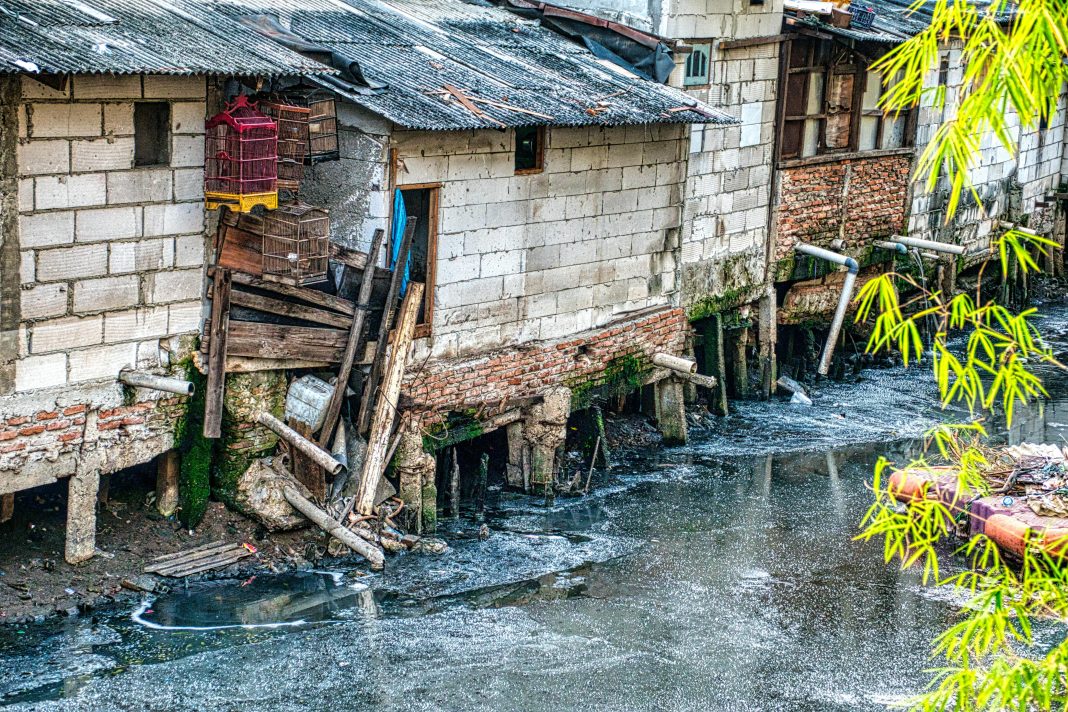For business leaders and scientific professionals, addressing water pollution is crucial for the environment, economy, regulatory compliance, and public reputation. Victor Durand at Ever Dye highlights this issue in the textile industry and urgently calls for sustainable innovation
The textile industry, valued at over $1.7 trillion globally, plays a vital role in economic development, especially in emerging markets. However, it is also among the top industrial polluters of freshwater systems. For business leaders and scientific professionals alike, addressing water pollution is not just an environmental obligation – it’s an economic, regulatory, and reputational imperative. This article examines the key pollution drivers in textile production, their impacts on water resources, and emerging solutions that align profitability with sustainability and could turn the industry into a beneficial industry for everyone.
Water Pollution in Textile Manufacturing: Key Drivers Chemical-Intensive Processes
Wet processing stages – such as scouring, bleaching, dyeing, and finishing – are responsible for 70–80% of water pollution in the textile sector. These processes involve huge amounts of chemicals, many of which are classified as hazardous by regulatory agencies like the EU’s REACH and the U.S. EPA. A single ton of dyed fabric can generate 200 tons of wastewater, often filled with heavy metals (e.g., lead, chromium), formaldehyde, and aromatic amines.
Synthetic Dye Use
Synthetic dyes significantly contribute to water pollution, particularly through the discharge of untreated or inadequately treated wastewater from textile and dyeing industries. These dyes are often complex, non-biodegradable chemical compounds that resist natural degradation processes, allowing them to persist in aquatic environments for extended periods. When released into rivers and lakes, they can block sunlight penetration, disrupting photosynthesis in aquatic plants and affecting the entire ecosystem. Additionally, many synthetic dyes contain toxic or carcinogenic substances that pose serious health risks to aquatic life and, ultimately, to humans through bioaccumulation and contaminated water sources.
Microplastic Shedding
It is estimated that between 200,000 and 500,000 tonnes of textile-derived microplastics enter the world’s marine environment each year. Regionally, about 8% of the microplastics released into European oceans originate from synthetic textiles. Globally, this share is even higher, estimated between 16% and 35%, underscoring the urgent need for mitigation strategies such as improved filtration technologies, fabric innovation, and consumer education.
Agricultural Runoff from Natural Fibers
Cotton cultivation, representing 20% of global textile fiber production, consumes large volumes of water and agrochemicals. Runoff from cotton farms contributes to nutrient pollution and eutrophication, degrading freshwater ecosystems.
Current impact of the industry and the challenges newcomers face
The fashion and textile industry exerts profound environmental and socioeconomic impacts, consuming approximately 93 billion cubic metres of water annually – equivalent to 4% of global freshwater extraction or over 37,000 Olympic swimming pools. This excessive water use contributes to growing water scarcity in vulnerable regions. Moreover, the release of untreated effluents into waterways alters aquatic chemistry, depletes oxygen levels, and leads to biodiversity loss by disrupting fragile ecosystems. These environmental harms also pose serious health risks to communities near production hubs such as Dhaka and Guangzhou, where elevated rates of skin diseases, gastrointestinal disorders, and cancer have been reported.
In response to these challenges, various initiatives – such as zero-liquid discharge systems, alternative dyes, and advanced wastewater treatment technologies – have been developed to mitigate pollution. However, their adoption remains limited and insufficient relative to the scale of the problem. Many promising solutions have not reached industrial scale due to barriers related to affordability, accessibility, and implementation speed. Fragmented regulations, a lack of supply chain transparency, and the absence of unified global standards further hinder progress. Without stronger incentives, coordinated policy support, and strategic investment, these innovations risk remaining isolated successes rather than achieving the systemic change required to transform the industry.
What Can We Do?
Tackling water pollution in the textile industry requires coordinated action across the entire value chain – from fiber production to consumer behavior. Brands must take responsibility for their supply chains by investing in traceability, setting science-based targets, and incentivizing cleaner production methods. Policymakers can accelerate progress by enforcing stricter water discharge regulations, subsidizing sustainable technologies, and fostering innovation through research grants and public-private partnerships. Crucially, significant investment is needed to scale up new sustainable methods – such as low-impact dyeing, closed-loop water systems, and biodegradable alternatives – which remain financially out of reach for much of the industry. Meanwhile, consumers play a vital role by demanding transparency, choosing low-impact materials, and supporting companies committed to environmental responsibility. Only through a multi-stakeholder approach and financial commitment from brands and manufacturers can we shift the industry toward a circular, water-conscious model that protects ecosystems while driving long-term value.
How EverDye Can Help
Lead the Transformation EverDye offers a compelling example of how science-driven innovation can address the textile industry’s most pressing environmental challenges. By developing fast-absorbing, bio-based pigments and a proprietary fixation technology that eliminates the need for toxic mordants and reduces water and energy consumption, EverDye tackles pollution at its source. Unlike traditional synthetic dyes, EverDye’s solution combines high color performance with biodegradability – solving the light fastness limitations of many natural or bacterial dyes. Moreover, its process is compatible with existing dyeing equipment, significantly lowering the capital expenditure barrier for manufacturers. By aligning ecological impact with operational efficiency, EverDye represents a scalable, economically viable path forward – paving the way for a textile industry that is both profitable and sustainable.
Sources:
- https://www.textiletoday.com.bd/the-rise-of-sustainable-textiles
- https://www.mdpi.com/2071-1050/16/24/10867
- https://www.researchgate.net/publication/344411653_Dyes_from_Textile_Industry_Wastewater_as_Emerging_Contaminants_in_Agricultural_Fields
- https://www.eea.europa.eu/publications/microplastics-from-textiles-towards-a
- https://textileexchange.org/knowledge-center/reports/materials-market-report-2024/
- https://news.un.org/en/story/2019/03/1035161


